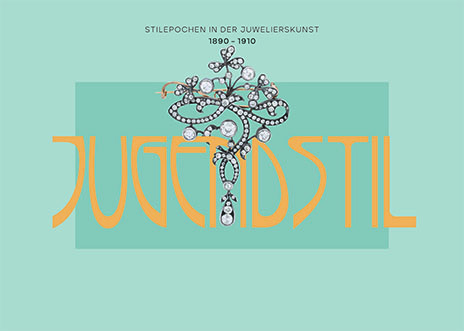Art Nouveau

The heyday of Art Nouveau was between 1890 and 1910, with its beginnings already in the "Arts and Craft" movement founded by William Morris in the mid-19th century. The illustrated cultural magazine "Jugend", founded in Munich in 1896, gave its name to the epoch.
Jugendstil was considered a young, modern and original movement. Its central features were decorative, sweeping elements that aimed to integrate nature into the modern world. Modern machines and techniques were often used in the realization of the works of art, but the industrial mass production of art, which began around 1900, was rejected. Art Nouveau thus represented an artistic countermovement to industrialization and the associated low-cost and mass production of products.
Jewelry from the era of Art Nouveau: an ode to naturalness and aesthetics
Art Nouveau, also known as Art Nouveau, was an artistic movement that unfolded in the last years of the 19th century and the first years of the 20th century. This era was characterized by a quest for renewal and a desire for aesthetics that was reflected in various art forms, including jewelry design. Art Nouveau broke with the rigid traditional norms of the Victorian era and brought a flood of creativity, naturalness and innovative thinking to the world of jewelry.
Aesthetics of Art Nouveau in jewelry design:
The Art Nouveau aesthetic in jewelry design was characterized by its organic shapes, flowing lines, and nature inspirations. Artists and jewelry designers of the time drew their inspiration from the natural world - from flowers and plants to animals and insects. These motifs were often stylized and depicted in elaborate patterns that created a harmony between art and nature.
Materials and Techniques:
Jewelry from the Art Nouveau era was often made from a variety of materials, including gold, silver, semi-precious stones, enamel, and glass. Jewelry designers experimented with innovative techniques to achieve the flowing shapes and organic motifs. Enamel, for example, was used to bring vibrant color to the pieces, while the "plique-à-jour" technique allowed for translucent enamel effects.
Famous Art Nouveau jewelry designers:
A number of talented jewelry designers shaped the Art Nouveau era. Rene Lalique was one of the pioneers of this movement and was known for his innovative glasswork and use of nature motifs in his jewelry. Georges Fouquet was another outstanding designer known for his elegant combination of gemstones and enamel in his work.
A legacy that endures:
Although the Art Nouveau era has passed, it left a lasting legacy in the field of jewelry design. Many contemporary jewelry designers still draw inspiration from the flowing lines, organic shapes, and natural beauty of Art Nouveau. These designs can be found in modern jewelry pieces that create a connection between the past and the present.
Summary
Art Nouveau was an aesthetic movement that revolutionized jewelry design by breaking away from rigid conventions and ushering in a new era of creativity and naturalness. The organic shapes, flowing lines and nature inspirations of this era shaped distinctive jewelry pieces that are still admired today. Art Nouveau left not only a rich legacy in the history of jewelry, but also a timeless inspiration for future generations of jewelry designers.
 Deutsch
Deutsch
 English
English